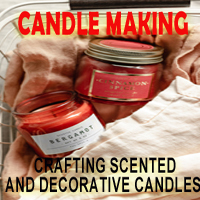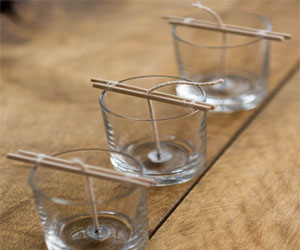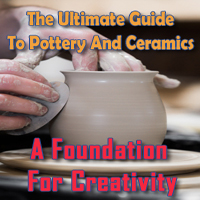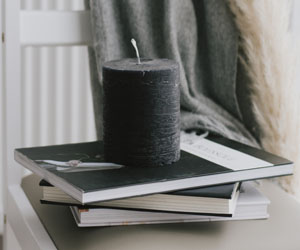


The Secrets To Healthy Skin And Hair

In the pursuit of healthier, more radiant skin and hair, it's crucial to turn our attention to nourishing ingredients. These natural, potent substances are derived from plants, fruits, and herbs and are known for their ability to feed and revitalize our bodies. Whether applied topically or consumed as part of a balanced diet, these nourishing ingredients play a vital role in achieving and maintaining the beauty we desire.
Aloe Vera: Often referred to as the "plant of immortality," aloe vera is a powerful natural ingredient for skin and hair. It contains vitamins, minerals, and enzymes that soothe and hydrate the skin, making it an effective remedy for sunburns and irritations. Aloe vera is also known to promote hair growth and reduce dandruff.
Coconut Oil: Rich in fatty acids and vitamins, coconut oil is a beloved ingredient for both skin and hair care. It provides intense moisturization, leaving skin soft and supple, and helps with hair conditioning and preventing split ends.
Honey: Honey is a natural humectant, meaning it helps the skin retain moisture. Its antibacterial properties make it effective in treating acne, while its antioxidants combat signs of aging.
Shea Butter: Shea butter is a skin superfood. It's packed with essential fatty acids and vitamins that provide moisture and aid in skin repair. It's particularly useful for dry and sensitive skin.
Green Tea: Green tea is rich in antioxidants known as polyphenols, which help combat free radicals and inflammation. Consuming green tea or applying it topically can improve skin texture and protect against UV damage.
Avocado: Avocado is a source of healthy fats, vitamins, and minerals. When applied to the skin, it nourishes and revitalizes, leaving it soft and glowing. It can also be used as a hair mask to add moisture and shine.
Vitamin E: Vitamin E is a powerful antioxidant that can protect the skin from damage caused by free radicals and the sun's harmful UV rays. It is commonly found in many skincare products and can also be obtained through diet or supplements.
Jojoba Oil: Jojoba oil closely resembles the skin's natural sebum. It's lightweight and absorbs easily, making it an excellent choice for moisturizing the skin and balancing oil production.
Oatmeal: Oatmeal has soothing and anti-inflammatory properties, making it a popular choice for treating various skin conditions, such as eczema and dryness. It can also gently exfoliate the skin.
Rosehip Oil: Rich in vitamins A and C, as well as essential fatty acids, rosehip oil is prized for its anti-aging and skin-regenerating properties. It can improve the appearance of scars and fine lines.
Turmeric: Turmeric is known for its anti-inflammatory and antimicrobial properties. It can be used in skincare to reduce redness, acne, and pigmentation issues.
Cucumber: Cucumber is hydrating and has a cooling effect on the skin. It's often used in skincare to reduce puffiness, redness, and irritation.
Nourishing ingredients are the foundation of a holistic approach to skincare and beauty. Their natural, nourishing properties can transform the way we care for our skin and hair, replacing synthetic chemicals with botanical wonders that are not only effective but also safe. Whether you're looking to revamp your skincare routine or enhance your diet for better beauty from within, these ingredients offer a natural path to achieving the healthy, radiant skin and hair you desire. So, embrace the power of nourishing ingredients and experience the transformation they can bring to your self-care rituals.
Exploring Candle Crafting Techniques
 Embedding: Embedding involves placing decorative objects (like dried flowers, seashells, or small figurines) within the candle as it cools and hardens. The objects are preserved within the candle, providing a unique, artistic touch.
Embedding: Embedding involves placing decorative objects (like dried flowers, seashells, or small figurines) within the candle as it cools and hardens. The objects are preserved within the candle, providing a unique, artistic touch.
Marbling And Swirling:
Marbled Candles: Achieve marbling effects by mixing various colored wax and gently swirling them together before pouring into a mold. The result is a candle with beautiful, intertwined patterns.
Swirled Candles: Create captivating swirl patterns by pouring different colored wax into a mold, then using a tool to create swirling designs before the wax solidifies.
Carving And Sculpting:
Carved Candles: Hand-carved candles are true works of art. After the candle has cooled and solidified, use carving tools to create intricate designs and patterns on the candle's surface.
Sculpted Candles: Sculpted candles involve shaping the wax while it's still soft and malleable. This technique allows for the creation of 3D designs and intricate shapes.
Aromatherapy And Scented Candles:
Aromatherapy Candles: Combine the art of candle making with the therapeutic benefits of aromatherapy. Infuse your candles with essential oils, such as lavender or eucalyptus, to create scented candles that promote relaxation and well-being.
Wax Embeds And Inclusions:
Wax Embeds: Add additional wax elements within your candles to create textural interest. These can be in the form of small wax chunks, flakes, or even finely grated wax that creates unique patterns within the candle.
Crafting A Sustainable Future
 The Essence Of Green DIY Projects
The Essence Of Green DIY Projects
Green DIY projects combine creativity with sustainability, providing a platform for you to express yourself while making environmentally responsible choices. These projects encompass a wide range of activities, from upcycling furniture and crafting eco-friendly home decor to making your own natural cleaning products or gardening with organic, homegrown produce.
Environmental Benefits
One of the most significant advantages of green DIY projects is their environmental impact. By consciously choosing sustainable materials, repurposing items, and reducing waste, these projects contribute to a greener and more eco-friendly world. They help lower the carbon footprint by diverting usable materials from landfills, conserving resources, and minimizing the environmental impact of manufacturing and transportation.
Promoting Sustainability
Green DIY projects promote sustainability in multiple ways. They encourage you to use sustainable, eco-friendly materials, such as reclaimed wood, bamboo, recycled fabrics, and non-toxic paints. By crafting your own goods, you also reduce the demand for mass-produced items, which often involve harmful chemicals, excessive packaging, and wasteful practices.
Cost-Efficiency
Many green DIY projects offer cost-efficiency. Making your own household products, for example, can save you money in the long run. Crafting your own furniture or decor can be more economical than buying new items, especially if you upcycle or repurpose materials you already have or find in thrift stores.
From Earth To Artistry
 The History Of Clay Sculptures: The origins of clay sculptures can be traced back to prehistoric times when early humans fashioned clay into small figurines and objects. These early creations were often utilitarian, serving as fertility symbols or talismans. As civilizations advanced, clay sculptures gained more prominence, taking on religious, decorative, and artistic significance.
The History Of Clay Sculptures: The origins of clay sculptures can be traced back to prehistoric times when early humans fashioned clay into small figurines and objects. These early creations were often utilitarian, serving as fertility symbols or talismans. As civilizations advanced, clay sculptures gained more prominence, taking on religious, decorative, and artistic significance.
In ancient Greece, for example, clay was employed to create intricate figurines, pottery, and votive offerings. The renowned terracotta warriors of China's Qin Dynasty, dating back over 2,000 years, are an exceptional example of the artistry and craftsmanship that can be achieved through clay sculpture. These life-sized, meticulously detailed soldiers were created to accompany the first Emperor of China in his afterlife, attesting to the importance of clay sculptures in historical contexts.
The Techniques Of Clay Sculpting: Clay sculpting encompasses various techniques, with artists employing handbuilding, coiling, slab-building, and wheel-throwing methods. Handbuilding involves directly manipulating the clay by pinching, coiling, and smoothing to create the desired shape. Coiling uses rolled clay ropes to build forms, while slab-building cuts flat pieces of clay to construct sculptures. The potter's wheel is yet another approach, allowing for precision and symmetry in shaping clay.
The Firing Process: One of the defining aspects of clay sculptures is the firing process. After the artist shapes the piece, it is left to dry, followed by firing in a kiln. Kiln temperatures can vary, resulting in different finishes and properties of the sculpture. Low-temperature firing may create porous, unglazed pieces, while high-temperature firing can produce sturdy, vitrified sculptures.
Exploring Beer Ingredients
 Water may seem unassuming, but it is arguably the most critical ingredient in brewing. Its composition, mineral content, and purity greatly affect the final beer. Different regions with unique water sources contribute to distinct beer styles. For instance, the soft water of Pilsen, Czech Republic, played a pivotal role in the creation of the world-famous Pilsner lager.
Water may seem unassuming, but it is arguably the most critical ingredient in brewing. Its composition, mineral content, and purity greatly affect the final beer. Different regions with unique water sources contribute to distinct beer styles. For instance, the soft water of Pilsen, Czech Republic, played a pivotal role in the creation of the world-famous Pilsner lager.
Malt: The Heart Of The Brew
Malt, typically derived from barley but sometimes wheat, rye, or other grains, serves as the primary source of fermentable sugars in beer. It undergoes a malting process, which involves soaking, germinating, and drying the grain to convert the starches into fermentable sugars. The variety of malt used, the degree of roasting, and the kilning process determine the color, flavor, and body of the beer. Lightly roasted malts contribute to pale lagers, while deeply roasted malts produce rich, dark stouts and porters.
Hops: The Spice Of Beer
Hops are the flowers of the hop plant and provide the bitterness, aroma, and flavor to beer. The bitterness in beer balances the sweetness of the malt, while the aromatic and flavorful qualities create the beer's distinctive taste. The choice of hop variety and the timing of hop additions during brewing greatly influence the final product. Some beer styles, like the hoppy and aromatic India Pale Ale (IPA), showcase the extensive use of hops, while others, like Belgian ales, use hops more conservatively, emphasizing yeast character.
Yeast: The Magical Microorganism
Yeast, the smallest but most vital ingredient, is responsible for fermentation, the process that transforms the sugars in the malt into alcohol and carbon dioxide.






Healing Stitches For Mind And Soul
 Sense Of Accomplishment: Completing a cross-stitch project provides a tangible sense of accomplishment. Watching a piece of artwork slowly take shape, stitch by stitch, instills a feeling of pride and boosts self-esteem.
Sense Of Accomplishment: Completing a cross-stitch project provides a tangible sense of accomplishment. Watching a piece of artwork slowly take shape, stitch by stitch, instills a feeling of pride and boosts self-esteem.
Emotional Expression: Cross-stitching can be a form of emotional expression. By selecting colors, patterns, and designs, individuals can channel their emotions into their creations, helping them process and cope with challenging feelings.
Distraction From Negative Thoughts: The process of cross-stitching serves as a constructive and enjoyable distraction from negative or intrusive thoughts. It can help redirect mental energy away from worries and concerns.
Connection And Community: Many individuals find solace in the cross-stitching community. Sharing projects, tips, and experiences with others can provide a sense of belonging and support, reducing feelings of isolation.
To engage in cross-stitching therapy and reap its mental health benefits, consider the following steps:
Select A Project: Begin by choosing a cross-stitch project that matches your skill level and interests.
Relaxation Through Candles
 Aromatherapy And Relaxation
Aromatherapy And Relaxation
In addition to their enchanting light, candles can be enhanced with soothing fragrances that promote relaxation. Aromatherapy candles are infused with essential oils that can evoke a variety of emotions and sensations. For instance, lavender is known for its calming and stress-reducing properties, while citrus scents like lemon and orange can boost energy and elevate mood.
Incorporating Candles Into Your Relaxation Routine
Bath Time Bliss: A warm bath can be made even more indulgent with the addition of scented candles. The soft lighting and aromatic scents can transform your bathroom into a personal sanctuary, creating an oasis of relaxation.
Meditation And Mindfulness: Candles are often used as focal points during meditation and mindfulness exercises. Gazing at the flame can help clear your mind and bring about a sense of inner peace and tranquility.
Dinner By Candlelight: Set the stage for relaxation by enjoying a quiet, candlelit dinner. Whether alone or with a loved one, this simple act can turn an ordinary meal into a serene, enjoyable experience.
Bedroom Retreat: Make your bedroom a haven of relaxation by placing scented candles on your bedside table. The soothing scent and soft light can help you unwind and prepare for a restful night's sleep.
Outdoor Escapes: Take your relaxation outdoors by lighting candles on your patio or in your garden. The combination of natural surroundings and candlelight can create a tranquil atmosphere that fosters relaxation.
Yoga And Stretching: Use candles as an integral part of your yoga or stretching routine. The combination of calming scents and gentle lighting can enhance your practice and help you achieve deeper relaxation.